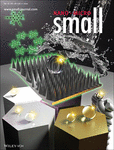Journal list menu
Export Citations
Download PDFs
Cover Picture
Carbon Nanothorn Arrays: One-Step Preparation of Highly Durable Superhydrophobic Carbon Nanothorn Arrays (Small 26/2020)
- First Published: 02 July 2020
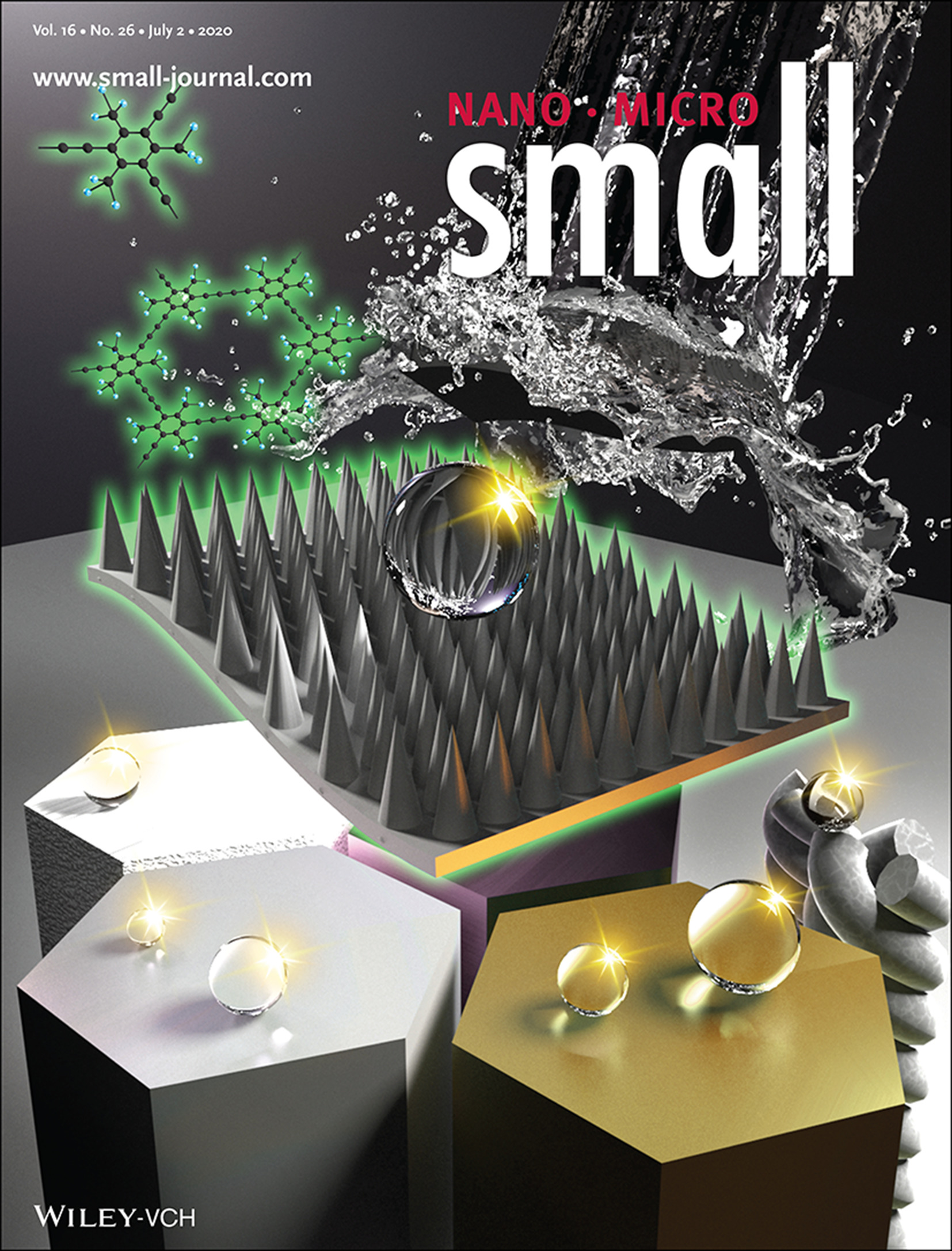
In article number 1907013, Changshui Huang and co-workers directly prepare the methyl substituted graphdiyne nanothorn arrays (MGDY NTAs) on a variety of substrates by a one-step method, which shows superhydrophobic properties, and high durability. The MGDY NTAs can be applied in the fields of metal corrosion protection and oil–water separation.
Inside Front Cover
Enzyme Sampling: Temporal Sampling of Enzymes from Live Cells by Localized Electroporation and Quantification of Activity by SAMDI Mass Spectrometry (Small 26/2020)
- First Published: 02 July 2020
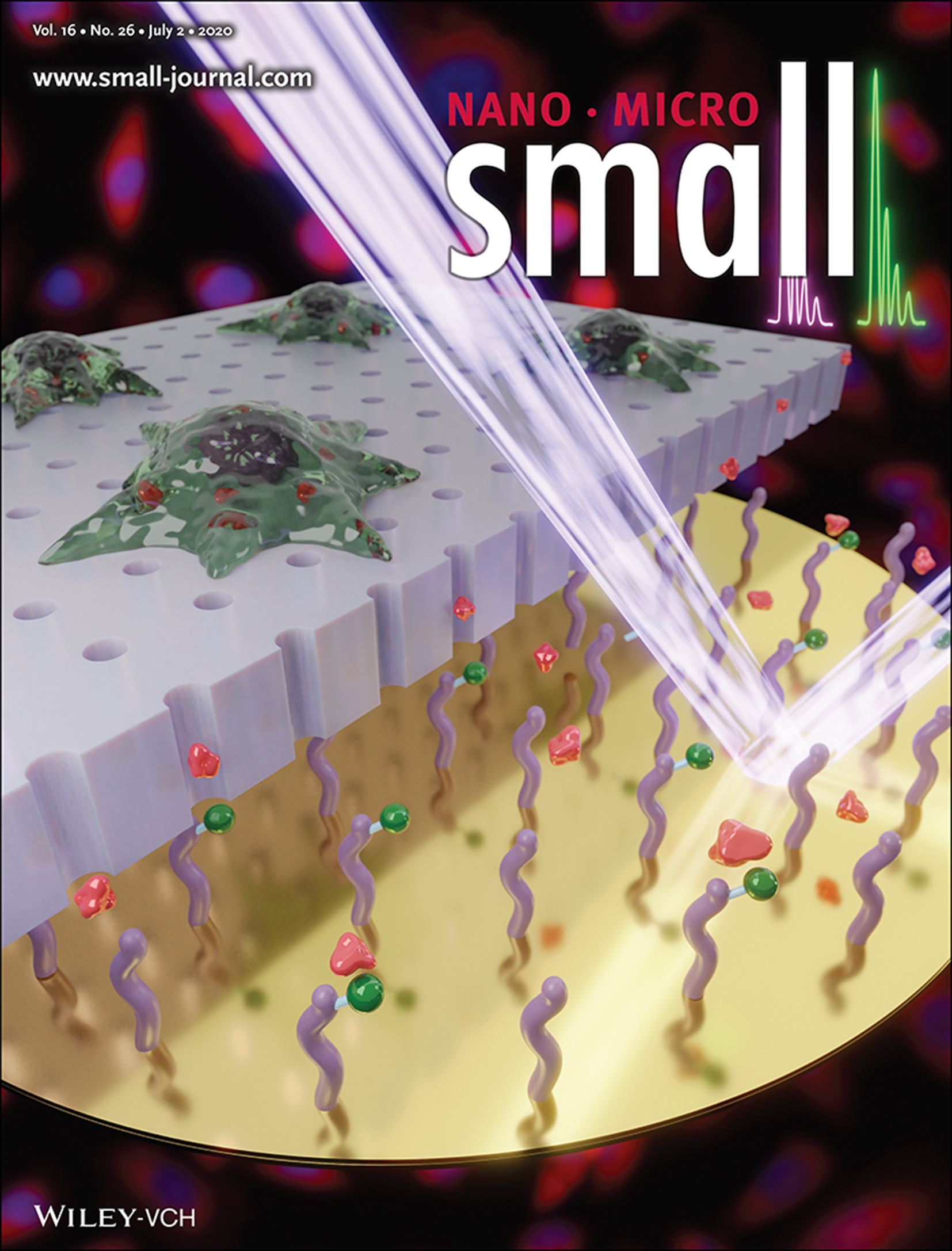
In article number 2000584, Milan Mrksich, Horacio D. Espinosa, and co-workers report on a method for non-destructively sampling enzymes multiple times from small populations of cells, using localized electroporation in microfluidic live cell analysis devices. The enzymes are captured in extraction chambers, where they modify immobilized substrates on a self-assembled monolayer, and their activity is quantified using self-assembled monolayers for matrix-assisted laser desorption/ionization (SAMDI) mass spectrometry.
Inside Back Cover
Perovskite Photodetectors: Sensitive and Stable Tin–Lead Hybrid Perovskite Photodetectors Enabled by Double-Sided Surface Passivation for Infrared Upconversion Detection (Small 26/2020)
- First Published: 02 July 2020
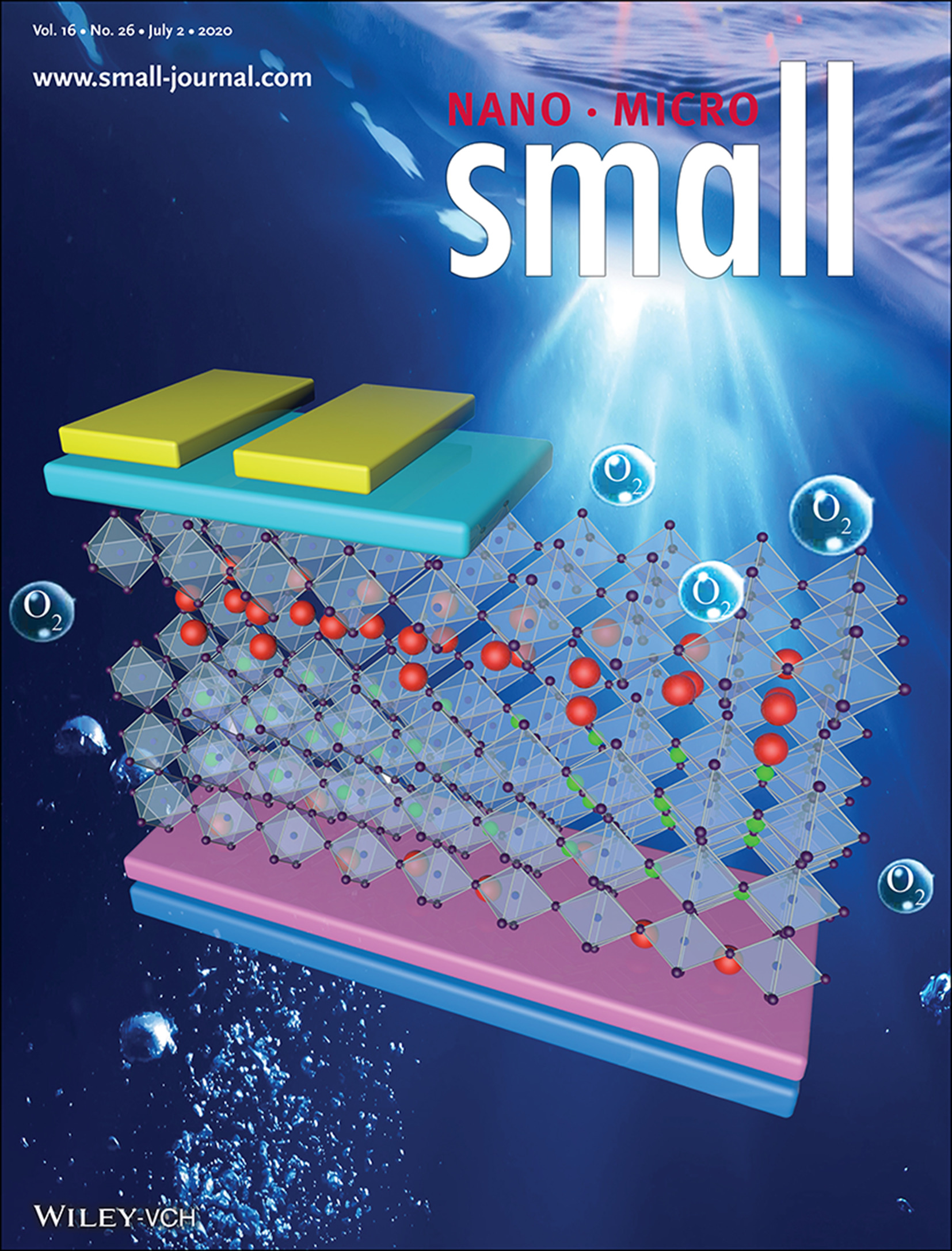
In article number 2001534, Liang Shen and co-workers demonstrate a sensitive and stable Sn-Pb perovskite photodetector, employing phenethylammonium iodide to complete defects passivation aiming the top and bottom of films. The double-sided surface passivation engineering can promote the grain growth, reduce the density of trap states and improve surface hydrophobicity. Finally, it realizes infrared up-conversion application for visualization.
Back Cover
Respiration Monitoring: From Molecular Reconstruction of Mesoscopic Functional Conductive Silk Fibrous Materials to Remote Respiration Monitoring (Small 26/2020)
- First Published: 02 July 2020
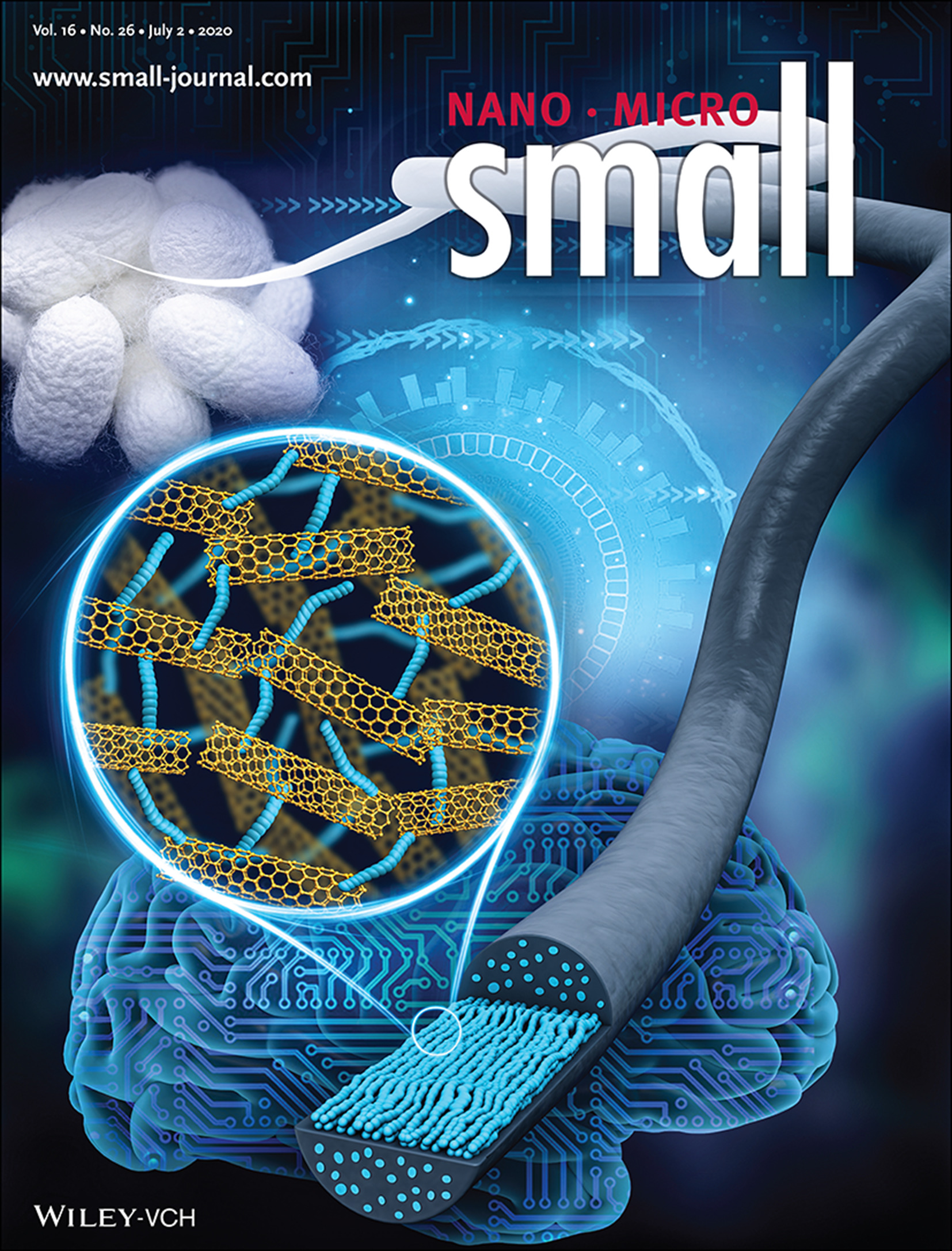
In article number 2000203, Xiang Yang Liu and co-workers meso-reconstruct silkworm silk fibrous materials based on carbon nanotubes which give rise to conductive silk fibers, for the fabrication of silk flexible electronics. They have humidity dependent conductivity and can be developed into biocompatible electronic humidity sensors. The combination with cloud computation and big data leads to remote monitoring and diagnosis of respiration and other physiological conditions.
Masthead
Reviews
Progress on Lithium Dendrite Suppression Strategies from the Interior to Exterior by Hierarchical Structure Designs
- First Published: 27 May 2020
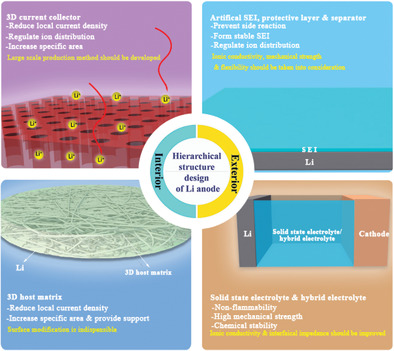
The strategy of suppressing Li dendrite growth and accommodating volume expansion is put forward from a new perspective of hierarchical structure designs of the Li anode from the interior (3D porous current collector and host matrix) to exterior (artificial solid electrolyte interphase (SEI), protective layer, separator, and solid-state electrolyte). The Li dendrite growth mechanisms and suppression strategies are also concluded.
Improving the Quality and Luminescence Performance of All-Inorganic Perovskite Nanomaterials for Light-Emitting Devices by Surface Engineering
- First Published: 20 May 2020
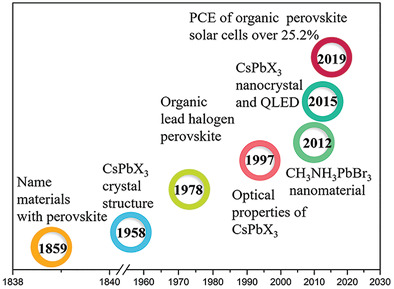
Surface engineering could influence the performance of inorganic perovskite nanomaterials and devices. Herein, common synthesis methods of perovskite nanomaterials and the working principles and effects of common ligands are reviewed, and the surface treatment methods used to improve the performance of perovskite quantum dot light emitting diodes are introduced .
Communications
One-Step Preparation of Highly Durable Superhydrophobic Carbon Nanothorn Arrays
- First Published: 10 May 2020
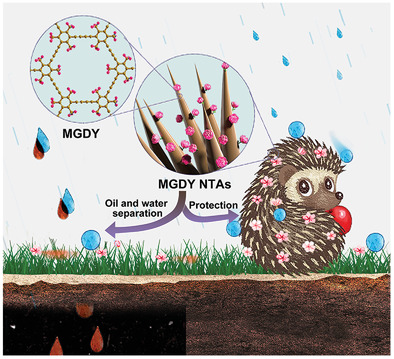
Novel methyl-substituted graphdiyne nanothorn arrays (MGDY NTAs) are prepared on various substrates using a one-step method. These are similar to hedgehog thorns, whereas methyls are similar to the flowers on thorns, which have a protective role. In contrast, the MGDY NTA morphology is similar to grass, while porous substrates are similar to soil, which can be used for oil–water separation.
Adsorption-Free Growth of Ultra-Thin Molybdenum Membranes with a Low-Symmetry Rectangular Lattice Structure
- First Published: 02 June 2020
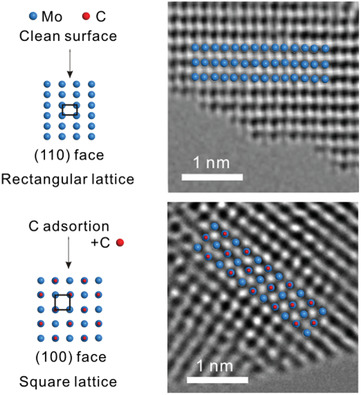
Ultra-thin body-centered-cubic phase molybdenum membranes with a low-symmetry rectangular (110) crystal face are synthesized via an adsorption free reaction. This work provides new insight for the preparation of well-defined two-dimensional transition metals with (110) faces and also is beneficial for the exploration and development of low-symmetry rectangular lattice structured materials with unique properties.
Full Papers
Temporal Sampling of Enzymes from Live Cells by Localized Electroporation and Quantification of Activity by SAMDI Mass Spectrometry
- First Published: 26 May 2020
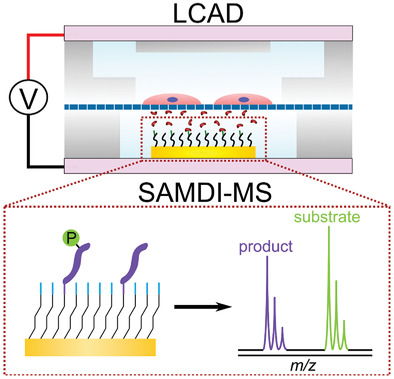
A microfluidic device for the nondestructive sampling of enzymes from cells and measuring their activity is presented. Cytoplasmic enzymes are extracted from small cell populations by localized electroporation. The enzymes modify a substrate immobilized on a self-assembled monolayer and their activity is quantified using mass spectrometry. Activity change in cell populations is monitored by repeating the process at multiple timepoints.
Sensitive and Stable Tin–Lead Hybrid Perovskite Photodetectors Enabled by Double-Sided Surface Passivation for Infrared Upconversion Detection
- First Published: 17 May 2020
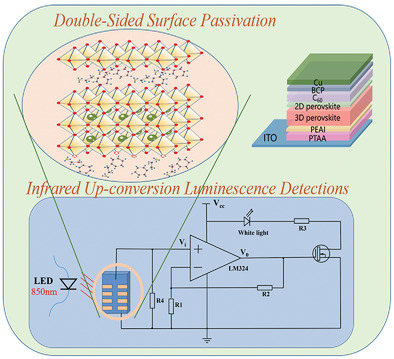
The double-sided surface passivation engineering is the use of phenethylammonium iodide to effectively passivate the top and bottom defects of Sn-based perovskite films. The increase of grain size, the decrease in density of trap states, and the surface hydrophobicity effectively improve the sensitivity and stability of Sn-based perovskite photodetectors. Finally, the photodetectors realize the infrared upconversion application.
From Molecular Reconstruction of Mesoscopic Functional Conductive Silk Fibrous Materials to Remote Respiration Monitoring
- First Published: 26 May 2020
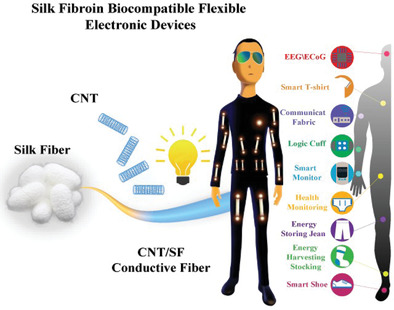
A new conceptual silk meso-fibrous material for biocompatible electronic applications is developed by carbon nanotubes meso reconstruction. It can be adopted to fabricate various fibrous sensors, i.e., electronic humidity sensors. In combination with internet of things (IoTs) and artificial intelligence technologies, a remote respiratory condition monitoring and diagnosis can be achieved.
X-Ray-Induced Growth Dynamics of Luminescent Silver Clusters in Zeolites
- First Published: 02 June 2020
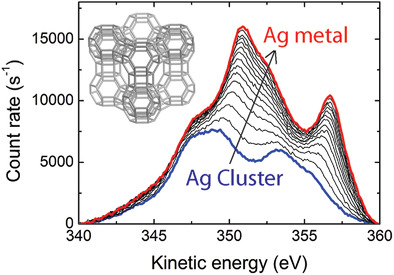
Luminescent silver clusters can be formed in zeolite frameworks by X-ray irradiation, but they have a broader size distribution. Cluster growth dynamics is framework-dependent and is also dependent on degree of silver loading in the framework. Growth from cations to luminescent clusters then non-luminescent metallic nanoparticles is observed.
Remarkable Piezophoto Coupling Catalysis Behavior of BiOX/BaTiO3 (X = Cl, Br, Cl0.166Br0.834) Piezoelectric Composites
- First Published: 19 May 2020
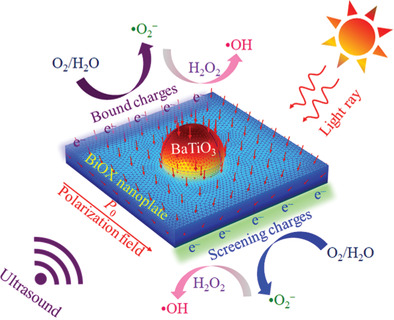
Under coirradiation of light and ultrasound, BiOX/BTO (X = Cl, Br, Cl0.166Br0.834) piezoelectric composites create a depolarization field induced by polarization charges of piezoelectric effect, which can be used as a driving force to promote the separation of photoinduced charge carriers, thus resulting in more excited electrons participating in photocatalytic reactions through reduction products •O2− and •OH radicals.
Enhanced Photocatalytic H2-Production Activity of CdS Quantum Dots Using Sn2+ as Cocatalyst under Visible Light Irradiation
- First Published: 02 June 2020
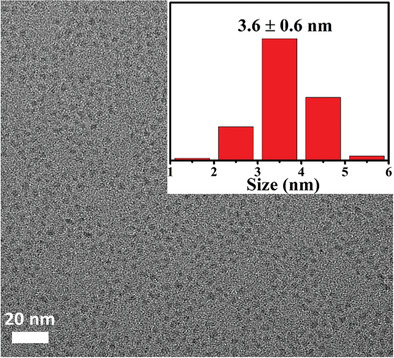
Sn2+ greatly enhances the H2-production activity of water-soluble CdS quantum dots (QDs). Sn2+ ions are reduced to Sn atoms by the electrons generated from the conduction band of CdS quantum dots under visible light irradiation. Sn atoms not only serve as photocatalytic cocatalyst for hydrogen generation, but also participate in forming CdS/Sn Schottky heterojunction.
SnO2 Quantum Dots: Rational Design to Achieve Highly Reversible Conversion Reaction and Stable Capacities for Lithium and Sodium Storage
- First Published: 04 June 2020

SnO2 quantum dots (≈5 nm) embedded in porous N-doped carbon matrix (SnO2/NC) are developed via a hydrothermal step combined with a self-polymerization process at room temperature. The ultrasmall size in quantum dots greatly shortens the ion diffusion distance and lowers the internal strain, significantly improving the conversion reaction efficiency and initial coulombic efficiency in lithium and sodium storage.
Confinement Growth of Layered WS2 in Hollow Beaded Carbon Nanofibers with Synergistic Anchoring Effect to Reinforce Li+/Na+ Storage Performance
- First Published: 05 June 2020
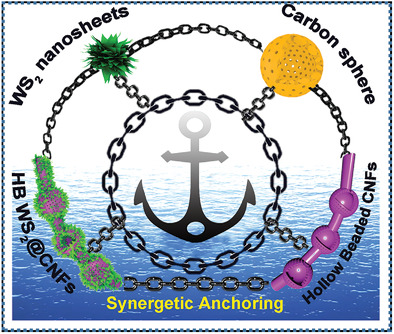
Tungsten disulfide (WS2) nanosheets are anchored on the surface and inside of hollow beaded carbon nanofibers (HB CNFs) via a confined growth strategy to construct hierarchical structure HB WS2@CNFs. The conversion mechanism of Li+/Na+ storage is analyzed by an ex situ method. This special structure can effectively restrain the volume effect and improve the storage performance of lithium-ion batteries and sodium-ion batteries.
Engineering Supramolecular Polymer Conformation for Efficient Carbon Nanotube Sorting
- First Published: 05 June 2020
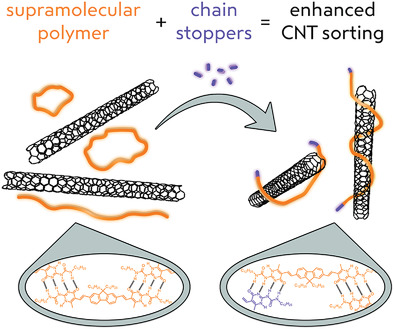
The addition of chain stoppers significantly improves carbon nanotube (CNT) sorting with an H-bonding supramolecular polymer. In-depth characterization reveals that this supramolecular polymer exhibits ring–chain equilibrium, and that stoppers skew the distribution toward chains, which can wrap CNTs more effectively. Careful selection of the stopper–monomer ratio results in doubling of the sorting yield without compromising the purity or properties of sorted CNTs.
Is GSH Chelated Pt Molecule Inactive in Anti-Cancer Treatment? A Case Study of Pt6GS4
- First Published: 05 June 2020
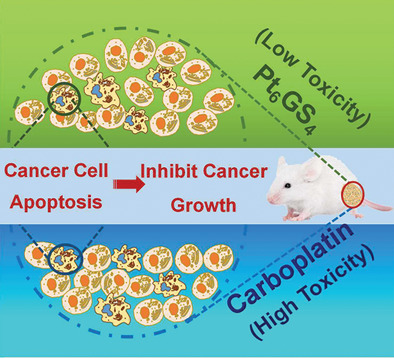
Previous reports have advocated that cancer cells could utilize endogenous GSH to chelate Pt drugs to produce inactive GSH-Pt adduct. Herein, a GSH chelated Pt molecule is precisely synthesized, which exhibits efficient cancer therapy without systemic toxicity in vivo. This work opens a route to explore polynuclear Pt compounds with accurate architectures as promising anti-tumor agents.
Bath Electrospinning of Continuous and Scalable Multifunctional MXene-Infiltrated Nanoyarns
- First Published: 05 June 2020
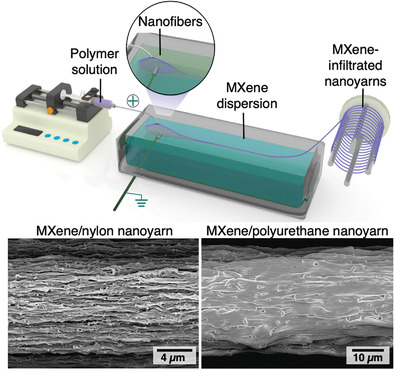
Continuous and electroactive MXene-based nanofiber yarns (nanoyarns) are fabricated using a bath electrospinning method, which captures MXene flakes throughout the entire cross-section of a nanoyarn, maximizing interactions between nanofibers and flakes. The high stretchability of polymeric nanofibers and the electrical and electrochemical properties of MXene offer a platform for storing energy and sensing body movements in wearable textiles.
In Vivo Repeatedly Activated Persistent Luminescence Nanoparticles by Radiopharmaceuticals for Long-Lasting Tumor Optical Imaging
- First Published: 08 June 2020
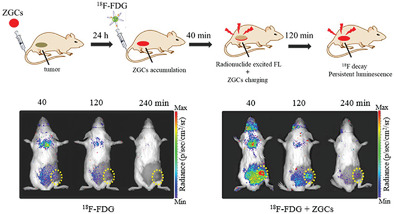
Radiopharmaceuticals (18F-FDG) with a short decay half-life are used as the internal light source to in vivo excite Cr3+-doped zinc gallate (ZGCs) for long-lasting luminescence for multiple times. This strategy can provide tumor luminescence imaging with high sensitivity, high contrast, and long decay time at desired time, greatly benefiting image-guided surgery in the future.
Urchin-Like Fe3Se4 Hierarchitectures: A Novel Pseudocapacitive Sodium-Ion Storage Anode with Prominent Rate and Cycling Properties
- First Published: 08 June 2020
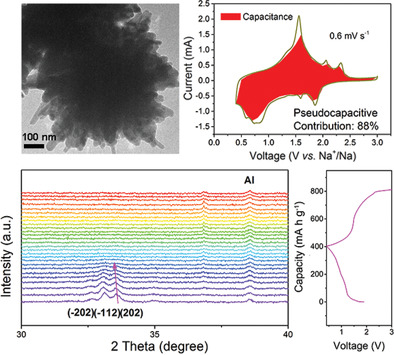
A Fe3Se4 anode featuring urchin-like hierarchitectures presents ultrahigh rate capability and outstanding cyclic stability in sodium-ion batteries. As revealed by electrochemical analyses and in situ XRD, the phase transformation from monoclinic to amorphous structure accompanied by the pseudocapacitive Na+ storage behavior accounts for the superior electrochemical performance.
A High-Energy and Long-Life Aqueous Zn/Birnessite Battery via Reversible Water and Zn2+ Coinsertion
- First Published: 08 June 2020
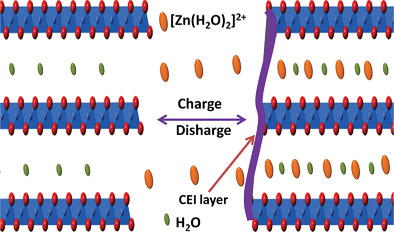
A mechanism of aqueous rechargeable zinc ion batteries is demonstrated. Through engineering Zn2+ primary solvation sheath in aqueous electrolyte, highly reversible [Zn(H2O)2]2+ intercalation/extraction into/from birnessite cathode is obtained and cathode–electrolyte interfaces are in-situ formed suppressing the Mn dissolution. In addition, the Zn metal anode also shows high reversibility without formation of “death-zinc” and detrimental dendrite.
Ultrathin 2D Mesoporous TiO2/rGO Heterostructure for High-Performance Lithium Storage
- First Published: 08 June 2020
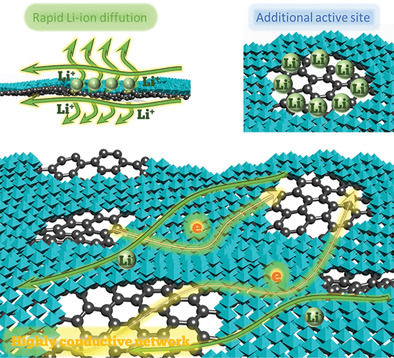
2D ultrathin mesoporous TiO2/rGO heterostructure is fabricated after heat treatment of the coprecipitated single-layered Ti3O72−/GO nanosheet. Owing to the ultrathin mesoporous characteristics and the enhanced ionic and electron conductivity, the resulting 2D ultrathin mesoporous heterostructures can deliver an extremely high lithium storage capacity and excellent cycling stability at high current density.
Hyperboloid-Drum Microdisk Laser Biosensors for Ultrasensitive Detection of Human IgG
- First Published: 08 June 2020
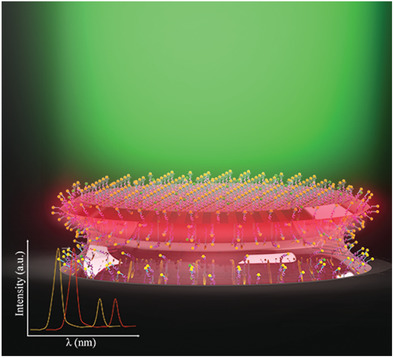
The new kind of microdisk lasers in a hyperboloid-drum (HD) shape is a combination of a dye-doped photoresist and a silica microdisk. Such HD microdisk laser biosensors can achieve specific detection of human immunoglobulin G in phosphate-buffered saline and artificial serum. The results from this study are approximately four orders of magnitude more sensitive than previous reports.




